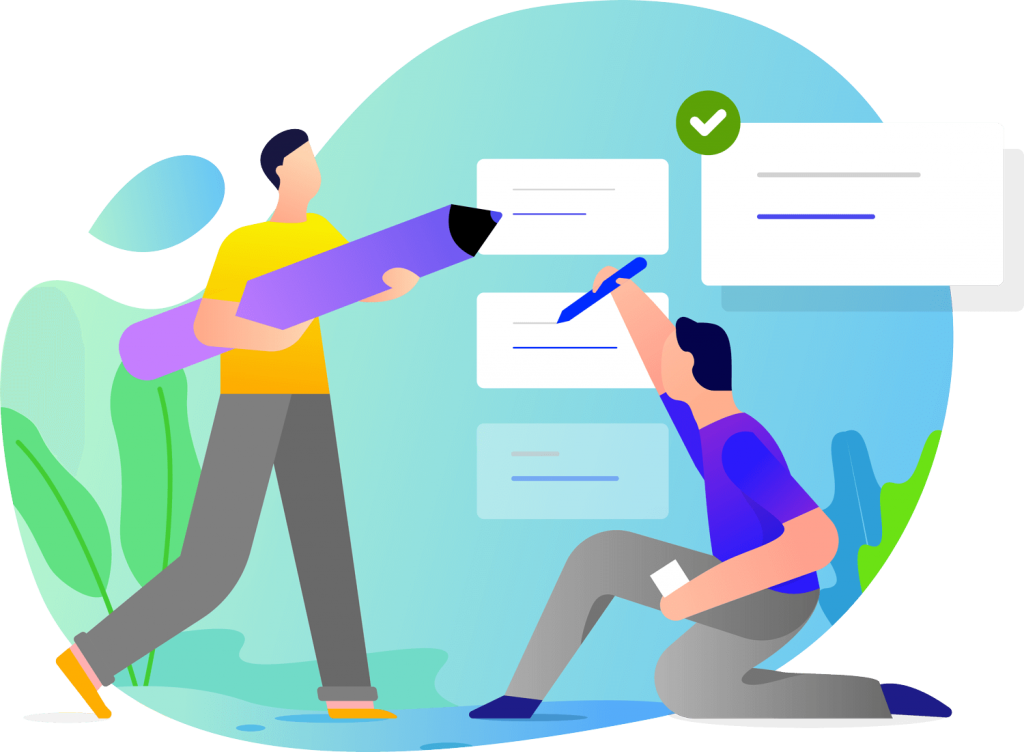Are you struggling to convert website visitors into paying customers? It might be time to take a closer look at your web design. In today’s digital age, a visually appealing and user-friendly website is crucial for any business’s success. However, many businesses unknowingly commit common web design mistakes that negatively impact their conversion rates. In this article, we will uncover these mistakes and provide valuable insights on how to rectify them, ultimately boosting your business’s online profitability. So, grab a cup of coffee and let’s dive into the world of web design blunders!



Table of Contents
Toggle1. Understanding the Impact: How Common Web Design Mistakes Can Negatively Affect Business Conversion Rates
In today’s digital world, where the majority of businesses rely on their online presence to generate leads and drive conversions, it is crucial to recognize the significance of web design in determining the success of a business. In this post, we will explore the various web design mistakes that are commonly made and how they can significantly impact the conversion rates of a business website.
One of the most common mistakes that can negatively affect business conversion rates is having a cluttered and disorganized website layout. When visitors land on a cluttered website, they quickly become overwhelmed and frustrated, resulting in a higher bounce rate. To ensure a seamless user experience and increase conversion rates, it is essential to have a clean and well-structured website design. This can be achieved by decluttering the navigation menu, providing clear call-to-action buttons, and arranging content in a logical and easy-to-understand manner.
Another significant web design mistake that can hinder conversion rates is the lack of mobile responsiveness. With the increasing number of people accessing websites through their mobile devices, it is imperative for businesses to have a responsive web design. A non-responsive website appears distorted and unreadable on smaller screens, leading to poor user experience and a decrease in conversions. By implementing a responsive design, businesses can ensure that their website adapts seamlessly to different screen sizes, providing a user-friendly experience and ultimately boosting conversion rates.
In conclusion, understanding the impact of common web design mistakes on business conversion rates is essential for businesses looking to thrive in the digital landscape. By avoiding cluttered layouts and prioritizing mobile responsiveness, businesses can enhance the user experience, increase engagement, and ultimately improve their conversion rates. Remember, investing in a well-designed website is the key to unlocking success in the competitive online marketplace.
2. The Art of Simplicity: Avoiding Overly Complex Website Designs to Optimize Conversion Rates
In today’s fast-paced digital landscape, the art of simplicity has become more important than ever when it comes to website design. Avoiding overly complex designs not only enhances the user experience but also plays a significant role in optimizing conversion rates. When a website is cluttered with too much information, intricate layouts, or complicated navigation, it can overwhelm visitors and result in high bounce rates. Thus, embracing simple and minimalist designs can greatly improve the effectiveness of your website in attracting and engaging users.
One key aspect of simplicity in website design is decluttering the interface. Streamlining the layout by removing unnecessary elements and focusing on the essential content allows users to easily navigate through your website and find what they are looking for. Implementing a clean and organized design will not only enhance the aesthetics but also provide a more enjoyable and intuitive browsing experience. Additionally, using ample white space between sections and paragraphs can help in highlighting important information, making it visually appealing and easier to digest. Remember, a clutter-free website not only promotes better user engagement but also conveys a sense of professionalism, reliability, and credibility to your visitors.
To further optimize conversion rates, consider employing concise and straightforward messaging throughout your website. Avoid using jargon or complex language that may confuse your audience. Instead, use clear and concise copy to communicate your value proposition and Call-to-Action (CTA) effectively. With attention spans shortening in the digital age, it is crucial to provide visitors with a clear and compelling message that grabs their attention and prompts them to take the desired actions. Implementing bold typography, bullet points, or unnumbered lists can help in breaking down information into digestible chunks, making it easier for users to scan and understand your content. By embracing simplicity in both design and messaging, you can create a website that resonates with your target audience and encourages higher conversion rates.
3. The Need for Speed: Creating Fast-Loading Websites to Improve Business Conversion Rates
In today’s fast-paced digital era, the need for speed cannot be underestimated, especially when it comes to websites. Slow-loading websites can not only be frustrating for users but can also significantly impact business conversion rates. Studies have shown that a mere one-second delay in page load time can result in a staggering 7% decrease in conversions.
So, how can you create fast-loading websites to ensure optimal user experience and improve your business conversion rates? Here are some key strategies to consider:
1. Optimize images: Images are an integral part of web design, but large, uncompressed files can drastically slow down your website. Ensure that all images are properly resized and compressed without compromising their quality. Use tools like Adobe Photoshop or online services to optimize your images for web use.
2. Minify your code: Unused or unnecessary lines of code can bloat your website and slow down its loading speed. Minifying your HTML, CSS, and JavaScript files by removing unnecessary characters, line breaks, and whitespaces can significantly reduce file sizes. Consider using minification tools or plugins to automate this process and improve your website’s performance.
3. Leverage browser caching: Browser caching allows web pages to be stored locally on a user’s computer, reducing the need to fetch resources from the server with each visit. By setting expiration dates for static resources like images, CSS, and JavaScript files, you can ensure that browsers only need to load these resources once, resulting in faster page loading times for returning visitors.
4. Utilize Content Delivery Networks (CDNs): CDNs are a network of servers distributed globally that cache static website content and deliver it to users from the closest server to their location. By distributing your website across multiple servers geographically, CDNs can significantly reduce the latency and improve loading times for users around the world.
By implementing these strategies, you can create fast-loading websites that not only enhance the user experience but also boost your business conversion rates. Remember, in the fast-paced online world, every second counts! So, prioritizing website speed is essential to stay ahead of the competition and maximize your online success.
4. Responsive Design: Ensuring Mobile Compatibility to Maximize Business Conversion Rates
In today’s digital landscape, where mobile devices have become an integral part of our daily lives, ensuring mobile compatibility is crucial for businesses looking to maximize their conversion rates. Responsive design is the key to delivering a seamless user experience across devices, allowing businesses to engage and convert users on mobile platforms effectively.
With the ever-increasing number of mobile users, having a responsive website is not just a choice; it’s a necessity. A responsive design adapts to the user’s screen size, ensuring that your website looks and functions flawlessly on any device, be it a smartphone, tablet, or a desktop computer. By optimizing your site for mobile compatibility, you eliminate the need for users to zoom or scroll horizontally, providing them with a user-friendly interface that encourages exploration and interaction. This enhanced user experience builds trust, contributes to longer browsing sessions, and ultimately increases the likelihood of conversions.
To achieve mobile compatibility through responsive design, there are a few best practices to consider:
– Ensure your website’s layout and content dynamically adjust to different screen sizes, using HTML and CSS media queries to define breakpoints.
– Optimize images for faster load times on mobile devices, improving overall performance and user satisfaction.
- Utilize a mobile-first approach, prioritizing content and features that are essential for mobile users, and then scaling up for larger screens.
– Implement touch-friendly navigation and interactive elements, such as swipe gestures and large buttons, to enhance user engagement.
By implementing responsive design strategies, businesses can unlock the full potential of their digital presence, meeting customers where they are, regardless of the device they use.
5. The Power of Visual Hierarchy: Designing an Intuitive Website Layout for Enhanced Conversion Rates
Visual hierarchy plays a crucial role in creating an intuitive website layout that maximizes conversion rates. By strategically arranging and prioritizing elements on a web page, you can guide the user’s attention and influence their browsing behavior. One of the key aspects of an effective visual hierarchy is the proper use of size and scale. By making important elements such as headlines, calls to action, and key information larger and more prominent, you can instantly grab the user’s attention and prioritize the information they need to make decisions.
In addition to size, color also plays a significant role in visual hierarchy. The careful selection and contrast of colors can help establish a clear visual structure and draw attention to specific elements. For example, using vibrant and contrasting colors for important buttons or links can make them stand out and encourage users to take action. Similarly, incorporating muted and complementary colors for less important elements can prevent visual overload and ensure a harmonious and balanced design. Moreover, typography and font choices can also contribute to creating a clear visual hierarchy. Using bold or italic fonts for headings, and a legible font for body text, can enhance readability and help users quickly identify important sections or key information.
Q&A
Q: What are some common web design mistakes that can negatively impact business conversion rates?
A: When it comes to web design, there are several common mistakes that can have a significant impact on business conversion rates. These mistakes include:
Q: What is the first common web design mistake that affects conversion rates?
A: One of the most common web design mistakes is having a cluttered and disorganized layout. When a website is cluttered with too much information, it overwhelms visitors and makes it difficult for them to find what they’re looking for. This can lead to high bounce rates and decreased conversion rates.
Q: How does a slow-loading website affect conversion rates?
A: Another common mistake is having a slow-loading website. In today’s fast-paced digital world, visitors have little patience for slow-loading websites. If your website takes too long to load, visitors are likely to leave before even experiencing your content or making a purchase, resulting in missed conversion opportunities.
Q: Does the use of complicated navigation menus impact conversion rates?
A: Yes, complicated navigation menus can significantly impact conversion rates. When visitors struggle to navigate through your website, they get frustrated and may abandon their browsing session altogether. To improve conversions, it is crucial to have a clear and user-friendly navigation menu that guides visitors smoothly to their desired content.
Q: How does poor mobile optimization affect conversion rates?
A: With the increasing use of smartphones and tablets, it is essential to have a website optimized for mobile devices. If your website is not mobile-friendly, it will be difficult for mobile users to navigate and interact with your site. This can result in a high bounce rate and low conversion rates among mobile users.
Q: Are overwhelming or distracting visuals a common web design mistake?
A: Absolutely, overwhelming or distracting visuals can be a major web design mistake. While visually appealing elements can enhance a website, an excessive use of flashy animations, pop-ups, or auto-playing videos can distract or annoy users. This can lead to a negative user experience and ultimately hinder conversion rates.
Q: How important is clear and compelling call-to-action (CTA) on a website?
A: Clear and compelling calls-to-action (CTAs) are crucial for improving conversion rates. If your website lacks prominent and persuasive CTAs, visitors may not know what actions to take next. Well-designed CTAs that stand out and clearly communicate the desired action can motivate users to take the desired conversion steps.
Q: Does inconsistent branding impact business conversion rates?
A: Yes, inconsistent branding can have a significant impact on conversion rates. When your website’s design elements, color schemes, and overall branding don’t align with your company’s identity, it creates confusion and a lack of trust among visitors. Consistency in branding helps build familiarity and credibility, leading to higher conversion rates.
Q: Is it important to provide a clear and concise product or service description on a website?
A: Absolutely. A clear and concise product or service description is crucial for driving conversions. When visitors land on your website, they expect to quickly understand what you offer and how it will benefit them. Failing to provide a clear description can leave potential customers confused and more likely to leave your site without taking any action.
Q: How can businesses avoid these common web design mistakes and improve their conversion rates?
A: To avoid these common web design mistakes and improve conversion rates, businesses should consider working with professional web designers or agencies. Conducting regular usability testing, optimizing website speed, streamlining navigation, implementing responsive design, and prioritizing compelling CTAs are some of the practices that can significantly enhance the user experience and boost conversion rates.
Conclusion
In conclusion, avoiding common web design mistakes is crucial for businesses aiming to maximize their conversion rates. By understanding and rectifying these errors, a website can create a seamless user experience, instill trust, and ultimately drive more conversions. Keeping design elements simple and clutter-free, ensuring mobile responsiveness, optimizing page loading speeds, and providing clear calls-to-action are just some of the key factors that can positively impact conversion rates. It is important for businesses to continuously monitor and analyze their website’s performance, as well as stay updated with evolving design trends and user preferences. By doing so, businesses can enhance their online presence, attract more customers, and achieve their desired conversion goals. Remember, in today’s competitive digital landscape, effective web design can be a powerful tool that sets businesses apart from the crowd and drives success. So, seize the opportunity to avoid these common web design mistakes and take your business conversion rates to new heights.





